Growing Your Own Food: A Beginner's Guide to Starting a Vegetable Garden
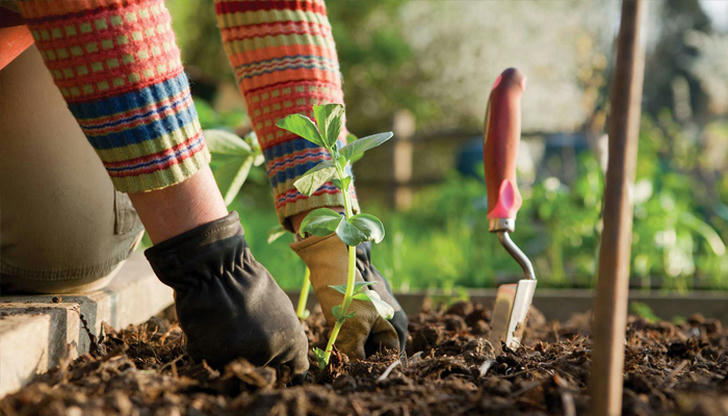
Growing your own food is a rewarding experience that offers numerous benefits. Not only can you enjoy fresh, healthy produce right from your garden, but you also contribute to a more sustainable lifestyle and reduce your environmental footprint. Whether you’re looking to save money on groceries, eat more homegrown vegetables, or simply find a new hobby, starting a vegetable garden can be a fulfilling and practical endeavor. This guide will walk you through the essential steps to get started, from planning to harvesting.
1. Introduction
There is something truly satisfying about growing your own food. It provides an unmatched sense of accomplishment and connection to nature. A vegetable garden offers a variety of benefits, including improved nutrition, the ability to grow food without pesticides, and the opportunity to eat seasonally. Additionally, gardening can be an enjoyable and stress-relieving activity, making it a perfect hobby for people of all ages. Whether you're a beginner with little to no experience or someone looking to enhance your gardening skills, starting your own vegetable garden is a great place to begin.
2. Planning Your Garden
A. Choosing the Right Location
The first step to a successful garden is selecting the right location. Most vegetables need at least 6 to 8 hours of direct sunlight per day. Choose a spot in your yard or on your balcony that gets plenty of sunlight, is well-drained, and is easily accessible for watering and maintenance. If you're planting in an area with poor soil, raised beds or containers can be great alternatives.
B. Garden Size and Layout
When planning your garden, consider the amount of space you have. Small gardens can be just as productive as larger ones if you plan wisely. Raised garden beds, container gardens, and vertical gardens (such as trellises for climbing plants) are all excellent options for maximizing space. You can start small, with just a few plants, and expand as you gain more experience. If you have a larger garden area, you can plan a layout with rows, pathways, or even use the principles of companion planting (growing complementary plants together to benefit each other).
C. Selecting Suitable Plants
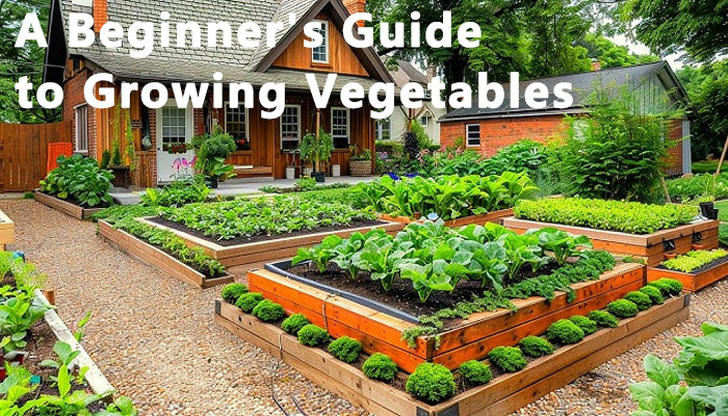
Choosing the right plants is crucial to the success of your garden. Consider your climate zone, as different vegetables thrive in different conditions. You should also think about which vegetables your family enjoys eating. For beginners, it’s best to start with easy-to-grow crops like tomatoes, lettuce, spinach, carrots, beans, and zucchini. These are relatively low-maintenance and provide quick, rewarding results.
D. Creating a Planting Schedule
It’s essential to plant your vegetables at the right time to ensure they grow well. Planting schedules can vary depending on your region and the type of plants you’re growing. Use local gardening resources, such as extension services or online planting calendars, to determine when to plant your crops based on your last frost date in the spring and the first frost date in the fall. This will help ensure your plants get the proper amount of growing time.
3. Preparing the Soil
A. Testing Soil Quality
Healthy soil is the foundation of a successful garden. Before planting, test the pH level of your soil and check for key nutrients. Most vegetables prefer a soil pH between 6.0 and 7.0. You can buy a simple soil testing kit or send a sample to a local extension service for analysis. This will give you an idea of what nutrients your soil may be lacking and whether it needs any adjustments.
B. Amending the Soil
If your soil is too acidic or too alkaline, you can amend it to improve its quality. Compost is an excellent way to improve soil structure, provide nutrients, and enhance water retention. You can also add organic fertilizers like fish meal or bone meal to boost the nutrient content. If your soil has poor drainage, adding sand or organic matter can improve water flow.
C. Choosing Between Raised Beds or In-Ground Gardens
Decide whether you want to plant directly in the ground or use raised beds. Raised beds are ideal for gardeners with poor soil, limited space, or who want to avoid bending over to tend to their plants. They also allow better control over soil conditions. In-ground gardens are a good option if you have large, fertile soil and want to grow a wider variety of plants.
D. Mulching
Mulch is a great addition to any garden. It helps retain moisture, keeps the soil temperature stable, and suppresses weeds. Organic mulches like straw, wood chips, or shredded leaves also break down over time and improve the soil quality. Apply a 2-3 inch layer of mulch around your plants to maximize its benefits.
4. Planting Your First Vegetables
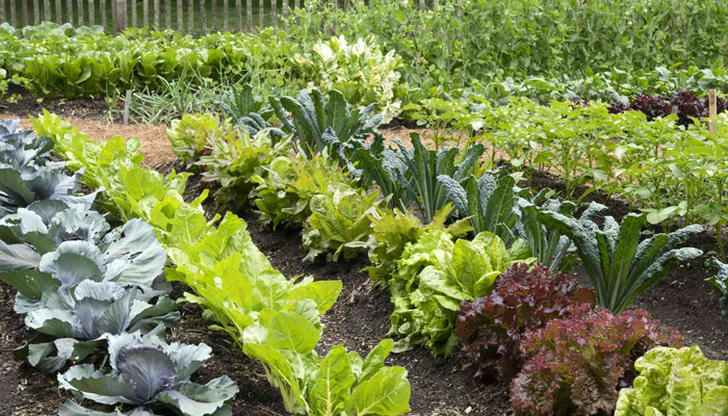
A. Best Vegetables for Beginners
As a beginner, it’s best to start with vegetables that are easy to grow and relatively low-maintenance. Some great options include:
Lettuce: Grows quickly and can be harvested multiple times throughout the season.
Tomatoes: A favorite for many gardeners, tomatoes are relatively easy to grow and can be grown in containers if needed.
Carrots: These root vegetables are simple to plant and maintain, especially if you have loose, well-drained soil.
Beans: Beans are fast-growing and are perfect for vertical gardening, making them a great option for small spaces.
Zucchini: This fast-growing plant produces abundant fruit throughout the summer.
B. Starting from Seeds vs. Transplants
You can start your vegetables from seeds or purchase young transplants from a local nursery. Starting from seeds gives you more control over the varieties you plant, but it also requires more time and attention. Transplants are faster to establish and can be a great option for beginners looking for a quicker harvest.
C. Planting Depth and Spacing
Different plants have different requirements for how deep they should be planted and how much space they need to grow. Check seed packets or plant labels for specific instructions. Most vegetables, such as carrots and radishes, should be planted at a shallow depth, while tomatoes and beans need more space to spread their roots.
D. Watering Techniques
Watering is one of the most important aspects of gardening. Too much water can lead to root rot, while too little can stunt plant growth. Water your garden deeply, but infrequently, to encourage strong root development. It’s better to water early in the morning to reduce evaporation and prevent fungal diseases.
5. Caring for Your Garden
A. Watering Needs
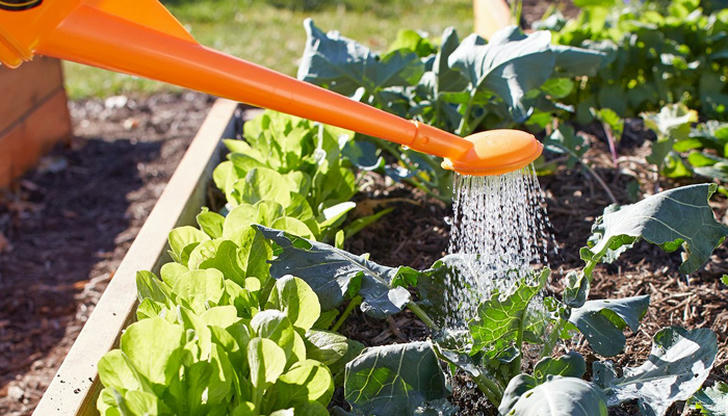
In general, most vegetable gardens need about 1-2 inches of water per week, depending on weather conditions. Be sure to adjust watering based on rainfall and soil type. Plants in containers or raised beds often require more frequent watering than those planted directly in the ground.
B. Fertilizing
Regular fertilization is important for healthy plant growth. Organic fertilizers like compost, fish emulsion, and worm castings are great options. You can also use slow-release fertilizers to provide a steady supply of nutrients over time. Be sure not to over-fertilize, as this can lead to weak plants and excessive leafy growth with few fruits.
C. Pruning and Staking
Prune and stake your plants to promote healthy growth and prevent disease. For example, tomatoes often need support through stakes or cages to keep the fruit off the ground. Pruning certain plants, like cucumbers or zucchini, can also help encourage stronger yields.
D. Pest and Disease Control
Keep an eye out for pests and diseases that can harm your plants. Use organic methods like companion planting, diatomaceous earth, or neem oil to control pests without harming beneficial insects or the environment.
6. Harvesting Your Crops
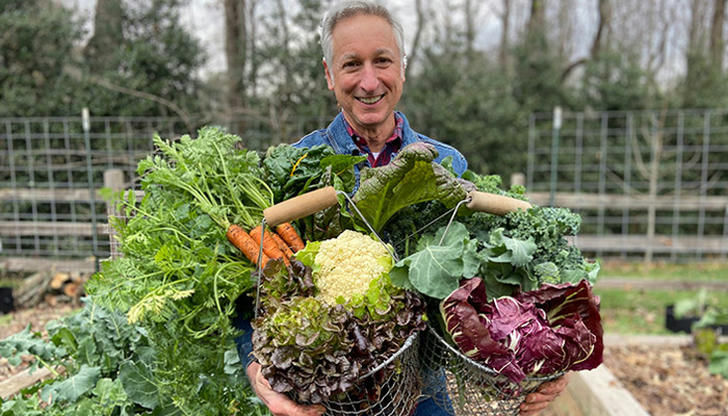
A. When to Harvest
It’s important to harvest your vegetables at the right time to ensure the best flavor and texture. Most plants have a specific harvest window, which is typically indicated on the seed packet or plant label. For example, tomatoes are best harvested when they are fully ripe and have reached their full color.
B. How to Harvest
Use sharp scissors or pruners to cut fruits or vegetables from the plant, being careful not to damage the plant. When harvesting leafy greens, like lettuce, it’s often best to cut outer leaves and allow the inner leaves to continue growing.
C. Storing and Preserving
If you have more vegetables than you can eat right away, preserve them by freezing, canning, or drying. Each method has its advantages, and the right one depends on the type of vegetable and how long you want to store it.
7. Troubleshooting Common Garden Issues
A. Pests and Bugs
Common pests like aphids, snails, and whiteflies can be managed using organic methods like handpicking, neem oil, or companion planting.
B. Diseases
Diseases like powdery mildew and blight can be controlled by removing infected plants, applying organic fungicides, and practicing proper garden sanitation.
C. Soil Problems
If your soil isn’t ideal, amend it with compost, organic matter, or cover crops to improve its fertility and structure.
8. Conclusion
Starting a vegetable garden may seem daunting, but with a little planning, the right resources, and some patience, you’ll be able to enjoy the fruits of your labor in no time. Remember, gardening is a learning process, and it’s okay to make mistakes along the way. The important thing is to enjoy the journey and appreciate the rewards of growing your own food. Happy gardening!
